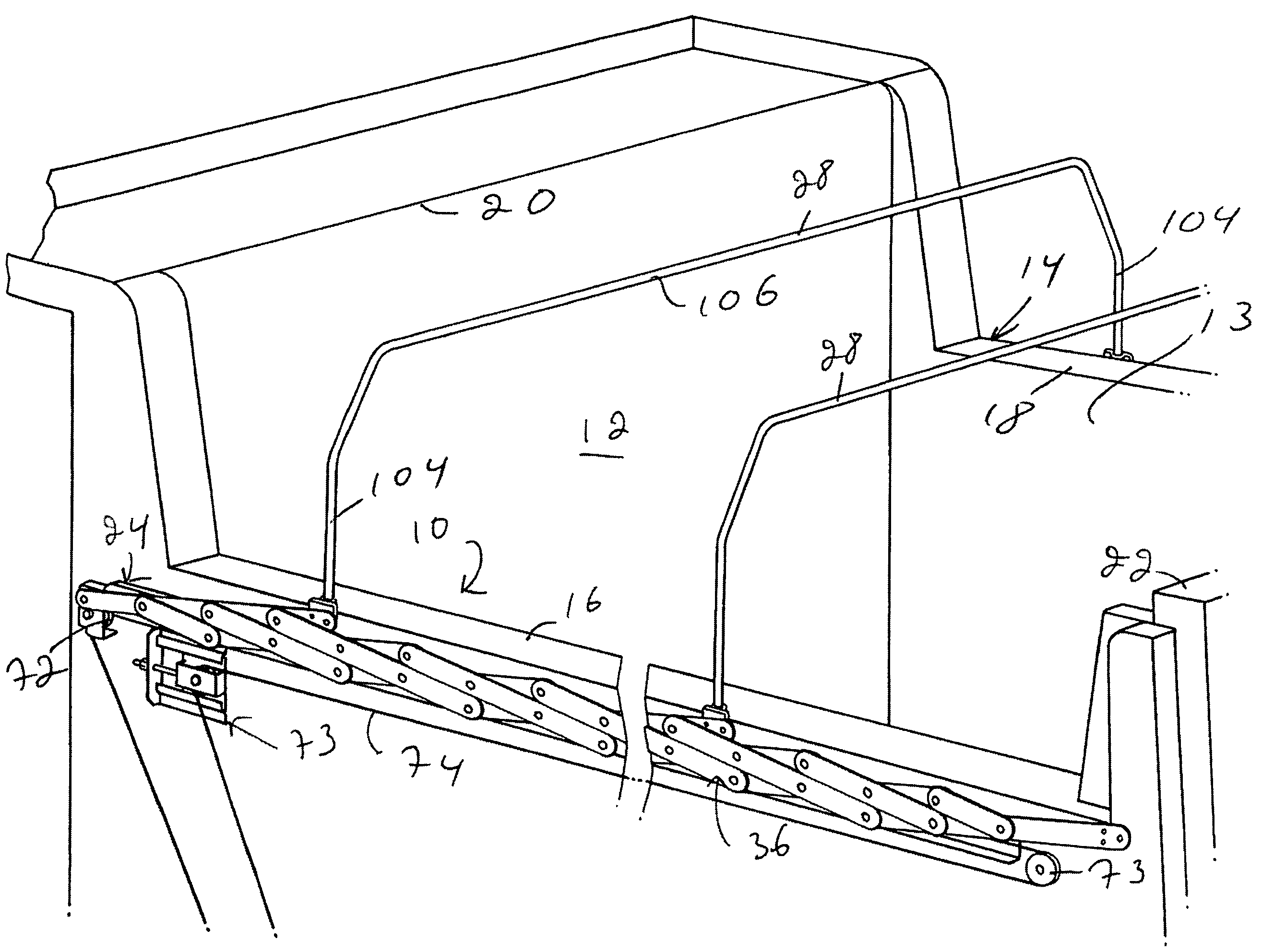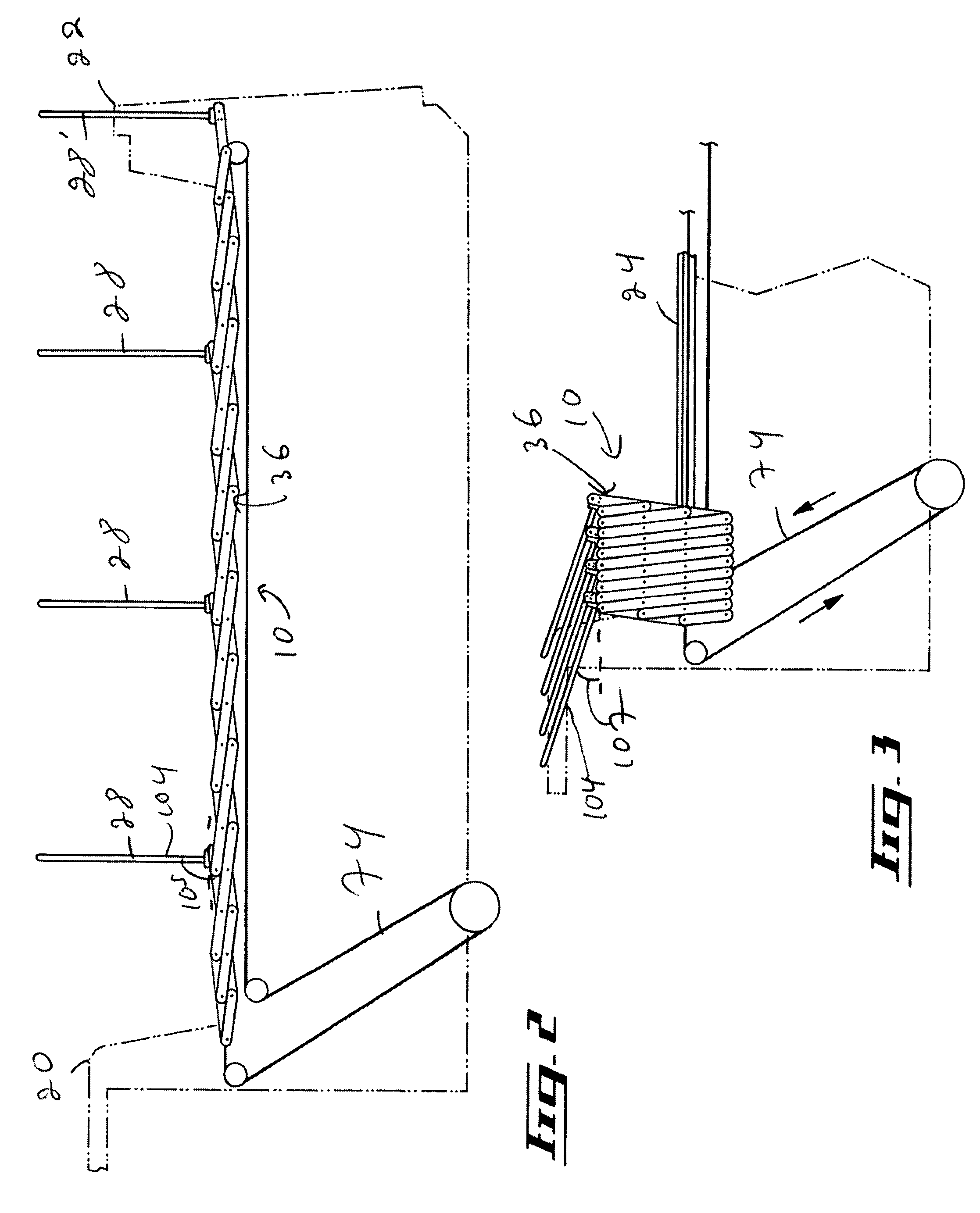Device for manipulating a tarpaulin
a technology for manipulating devices and tarpaulins, which is applied in the field of tarpaulins, can solve the problems of substantial risk, unnecessary wastage, and portion of the load being blown out of the open top container, and achieves the effects of convenient removal from the device, efficient resistance to these loads, and strong structur
- Summary
- Abstract
- Description
- Claims
- Application Information
AI Technical Summary
Benefits of technology
Problems solved by technology
Method used
Image
Examples
Embodiment Construction
[0032]FIG. 1 illustrates a device 10 for manipulating a tarpaulin (now shown in the drawings) so as to selectively cover and uncover a top aperture 12 of a container 13. Although, in the drawings, the container 13 is a container of a dump truck, it is within the scope of the invention to use the device 10 with any other suitable container. Also, the term container should be interpreted as being a relatively generic term describing any assembly having a peripheral wall defining a top aperture to which one would like to have access. For example, the container could be a shed.
[0033]The top aperture 12 defines an aperture peripheral edge 14. The aperture peripheral edge 14 includes two substantially opposed longitudinal segments 16 and 18 and two lateral segments 20 and 22 extending between the longitudinal segments 16 and 18 substantially opposed to each other. Although the top aperture 12 has an aperture peripheral edge 14 having a substantially rectangular configuration in the drawin...
PUM
 Login to View More
Login to View More Abstract
Description
Claims
Application Information
 Login to View More
Login to View More - R&D
- Intellectual Property
- Life Sciences
- Materials
- Tech Scout
- Unparalleled Data Quality
- Higher Quality Content
- 60% Fewer Hallucinations
Browse by: Latest US Patents, China's latest patents, Technical Efficacy Thesaurus, Application Domain, Technology Topic, Popular Technical Reports.
© 2025 PatSnap. All rights reserved.Legal|Privacy policy|Modern Slavery Act Transparency Statement|Sitemap|About US| Contact US: help@patsnap.com



